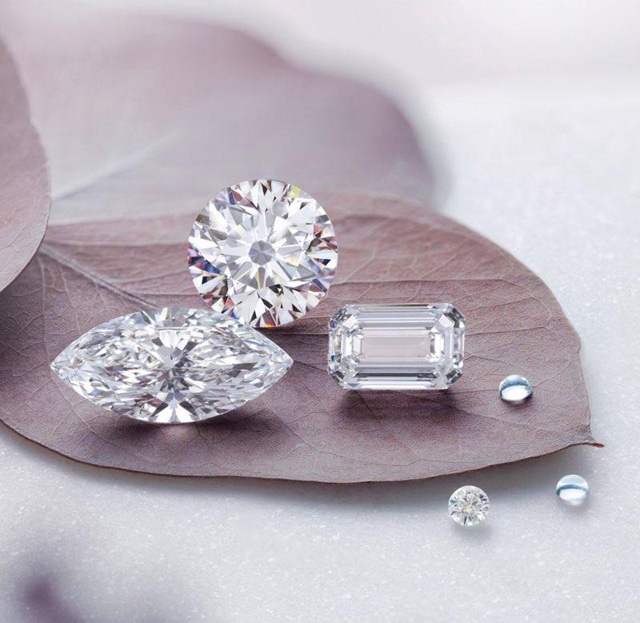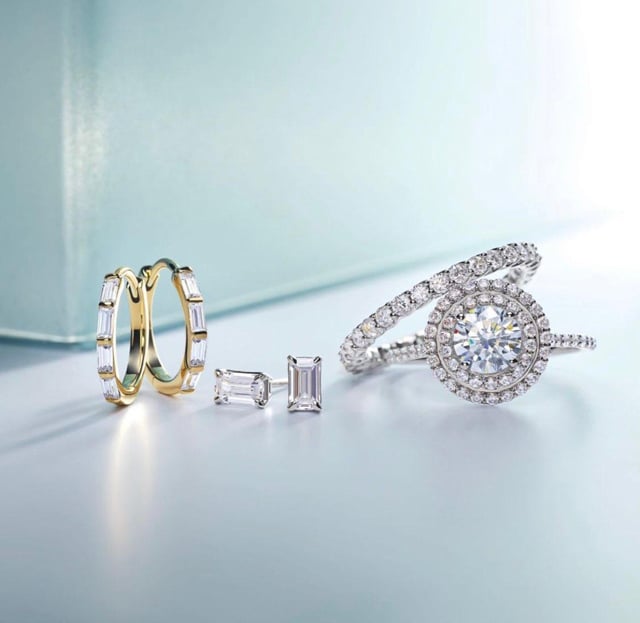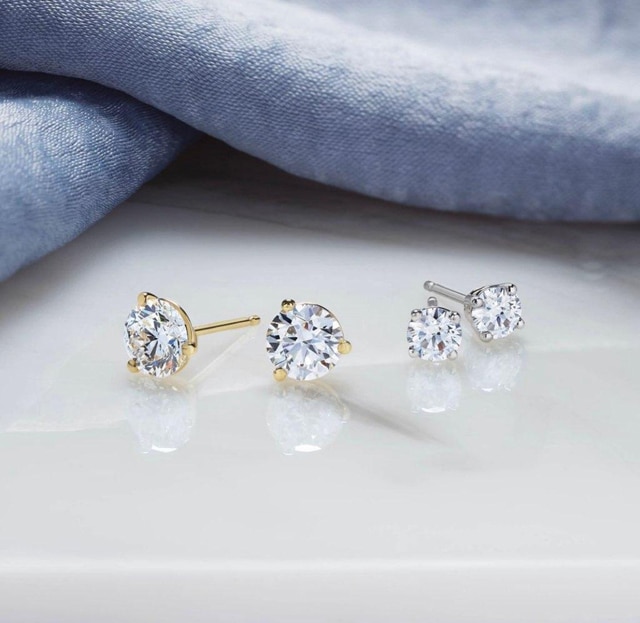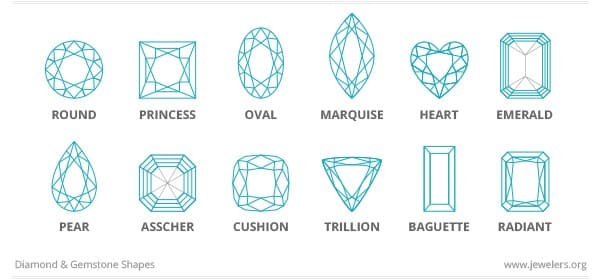



There’s a reason why diamonds are known to be a girl’s best friend. They have unique characteristics that set them apart from all other gemstones, namely their unique beauty, durability, enduring value, and SPARKLE!! Since expertise in the grading, selection, and sale of diamonds takes years of training, it is very important to purchase diamond jewelry from a professional you can trust. We are passionate about our craft and love to share our knowledge with our customers. We will show you a selection of GIA certified diamonds and explain the subtle differences in grade and value.
4Cs of Diamonds
There are four factors that determine the value of a diamond, collectively known as the 4Cs of Diamonds: Carat, Clarity, Cut, and Color. The best way to shop for a diamond is to have a good understanding of the 4Cs and determine which factors are most important to you, as each “C” means something different for each individual.
Diamond Carat Weight
Carat weight measures a diamond’s weight and size. The term “carat” is derived from the carob seeds that were used to balance scales in ancient times.
Today’s metric carat is equal to 200 milligrams, or one-fifth of a gram, and there are approximately 142 carats to an ounce. Carats are further divided into points. There are 100 points in a carat. A half-carat diamond may be referred to as a 50-point stone.
Because large diamonds are rare, they generally have a greater value per carat. When considering the value of a diamond or gemstone, two diamonds or gems of equal carat weight can have differing price points based on the quality of cut, color and clarity — the three other diamond quality factors. We are educated to distinguish and explain the various diamond quality factors so you find the highest quality diamond that fits your budget.
Because large diamonds are rare, they generally have a greater value per carat. When considering the value of a diamond or gemstone, two diamonds or gems of equal carat weight can have differing price points based on the quality of cut, color and clarity — the three other diamond quality factors. We are educated to distinguish and explain the various diamond quality factors so you find the highest quality diamond that fits your budget.
Diamond Size Chart

Diamond Clarity
A diamond’s clarity is affected by any external and internal characteristics created by nature when the diamond was formed or as a result of the cutting process.
Characteristics such as internal spots or lines are called inclusions. Although these marks make each stone unique, the fewer the inclusions, the more valuable the stone. Inclusions can sometimes interfere with the passage of light through the stone, diminishing the sparkle and value of the diamond.
According to the quality analysis system of the Gemological Institute of America (GIA), clarity is graded on a scale ranging from Flawless (Fl) to Imperfect (I). Only a tiny percentage of diamonds ever achieve a grade of Flawless.
Diamond Clarity Scale

Diamond Color
Diamonds come in every color of the spectrum, but the most popular are colorless. Truly colorless, pure white diamonds are extremely rare and, therefore, the most costly. Laboratories, like the Gemological Institute of America (GIA), grade stones according to how far they deviate from the purest white as one of the diamond 4Cs.
The best way to see the true color of a diamond is by looking at it against a white surface. Colorless stones are graded D, E or F. All three grades are considered colorless but with slightly decreasing transparency. Color grading continues down through the alphabet, with each letter designating a slight darker or warmer tint.

Colored Diamonds
Diamonds also come in a spectrum of majestic colors, from red and canary yellow to blue, green and purple. These colorful diamonds, known as fancies, are valued for their depth of color, just as white diamonds are valued for their lack of color. Therefore, fancy color diamonds are graded in order of increasing intensity from Faint, Very Light, Light, Fancy Light, Fancy, Fancy Intense, Fancy Vivid, Fancy Dark and Fancy Deep.
Diamond color grades are determined by professionals under ideal circumstances, a situation seldom duplicated outside of a laboratory. This is why all of our large stones are sent to GIA to be certified.
Diamond Cut
To many, cut is considered the most important of aspect of a gemstone’s quality and value. Diamond cut affects some of its optical and physical properties including how it reflects light and “sparkles.”
Diamond cut refers to how the jeweler physically cuts the diamond stone into its shape and to the proportions and symmetry that achieve optimal light dispersion, which affects a diamond’s quality and price.
The most common cut, the round brilliant, has 58 facets, or small, flat, polished planes designed to yield the maximum amount of light reflected back to the viewer.
A diamond’s light reflection, known as brilliance, is an extremely important factor in evaluating the quality of a diamond’s cut. A poorly cut diamond will actually lose light and appear dull.
The widest circumference of a diamond is known as the girdle. Above the girdle of a brilliant cut diamond are 32 facets plus the table, which is the largest and topmost facet. Below the girdle are 24 facets plus the culet, or point.

Proportion diagrams will typically include the following information:
A diamond’s cut impacts four aspects of the stone’s optical and physical properties:
Diamond Shapes
Most people are familiar with the round solitaire diamond and common “fancy” shapes — which refer to a gemstone cut in any shape other than round. Fancy cuts include such shapes as baguette, emerald, triangle, pear, princess, oval and marquis. Use our chart of diamond and gemstone shapes to identify your favorite:

Ring Styles
We offer many different ring settings and can help you select the one that’s the perfect match for you. Please reference the images below for some of the most popular styles.